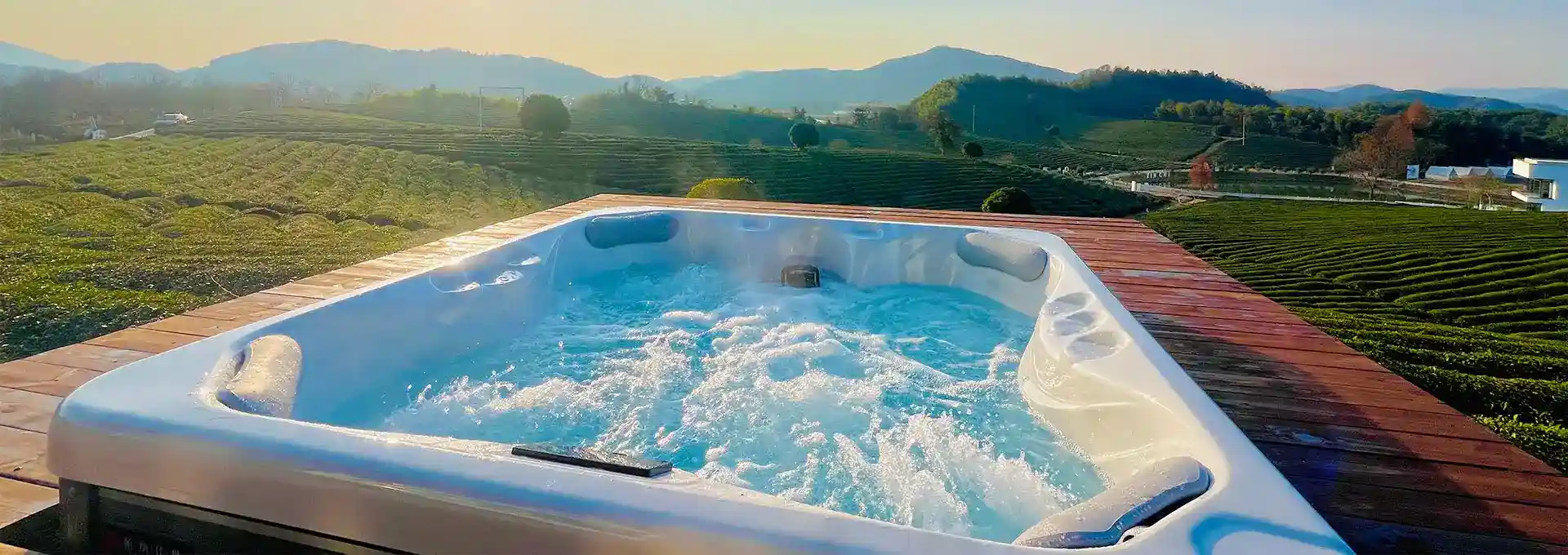How to Raise pH in Swim Spa?
2024-12-19 16:56:08
Maintaining the proper pH level in your swim spa is crucial for both the longevity of your equipment and the comfort of swimmers. A low pH can lead to corrosion of metal components, irritation of skin and eyes, and reduced effectiveness of sanitizers. In this comprehensive guide, we'll explore various methods to raise the pH in your swim spa, ensuring a balanced and enjoyable aquatic environment.
What causes low pH in a swim spa?
Before diving into solutions, it's essential to understand the factors that can lead to low pH in your swim spa. Several elements can contribute to this issue:
- High bather load: The more people use the swim spa, the more body oils, sweat, and other organic compounds are introduced, which can lower the pH over time.
- Rainwater: In outdoor swim spas, rainwater can dilute the water and potentially lower the pH, especially if the rain is acidic.
- Chemical imbalances: Overuse of certain chemicals, particularly chlorine-based sanitizers, can lead to a decrease in pH levels.
- Source water: If your source water has a naturally low pH, it can affect the overall balance of your swim spa.
- CO2 absorption: Carbon dioxide from the air can dissolve in the water, forming carbonic acid and lowering the pH.
Understanding these factors can help you prevent low pH issues and maintain a more stable water chemistry in your swim spa. Regular testing and proactive maintenance are key to avoiding significant pH fluctuations.
How do you adjust pH levels in a swim spa?
Adjusting pH levels in a swim spa requires a systematic approach and the right products. Here's a step-by-step guide to help you raise the pH effectively:
- Test the water: Use a reliable water testing kit to accurately measure the current pH level of your swim spa. The ideal range for pH is typically between 7.2 and 7.8.
- Calculate the volume: Determine the exact volume of water in your swim spa. This information is crucial for adding the correct amount of pH-raising chemicals.
- Choose the right product: Select a pH increaser specifically designed for swim spas or hot tubs. Sodium carbonate (soda ash) and sodium bicarbonate (baking soda) are common options.
- Add the chemical: Follow the manufacturer's instructions carefully. Generally, you'll need to dissolve the pH increaser in a bucket of water before adding it to the swim spa.
- Circulate the water: Run the swim spa's pump and jets for at least 30 minutes to ensure the pH increaser is evenly distributed throughout the water.
- Retest and adjust: After a few hours, test the water again. If the pH is still low, repeat the process, adding smaller amounts of the pH increaser until you reach the desired level.
- Fine-tune: Once you've achieved the correct pH range, make small adjustments as needed to maintain balance.
Remember that raising pH should be done gradually to avoid overshooting the target range. It's better to make small, incremental changes over time rather than large adjustments all at once. This approach helps prevent pH bounce and ensures a more stable water chemistry.
What is the fastest way to raise pH in a swim spa?
While it's generally recommended to adjust pH levels gradually, there may be situations where you need to raise the pH quickly. Here are some methods that can help expedite the process:
- Use a fast-acting pH increaser: Some products are specifically formulated to raise pH levels rapidly. These often contain a higher concentration of alkaline substances and can work more quickly than standard pH increasers.
- Aeration: Increasing water movement and exposure to air can help raise pH naturally. Run your swim spa's jets at full power and, if possible, remove any covers to allow for maximum air exposure.
- Baking soda method: For a quick DIY solution, you can use baking soda (sodium bicarbonate). Add about 1 tablespoon of baking soda per 100 gallons of water. This method is gentler than using soda ash and can help raise pH while also increasing alkalinity.
- Soda ash solution: For a more potent option, use soda ash (sodium carbonate). Dissolve about 1 ounce of soda ash per 100 gallons of water in a bucket, then add it to the swim spa while the jets are running.
- Combination approach: Use a mix of aeration and chemical treatment. Start by adding a pH increaser, then maximize aeration to help the process along.
When using any of these methods, it's crucial to monitor the pH levels closely and frequently. Rapid changes in pH can sometimes lead to fluctuations in other water chemistry parameters, so be prepared to make additional adjustments as needed.
Keep in mind that while these methods can raise pH quickly, maintaining a stable pH level over time requires ongoing attention to water chemistry and regular maintenance. Consistently monitoring and adjusting your swim spa's water chemistry will help prevent the need for rapid pH corrections in the future.
In conclusion, raising the pH in your swim spa is an essential part of proper maintenance. By understanding the causes of low pH, following a systematic approach to adjustment, and knowing how to make quick corrections when necessary, you can ensure that your swim spa remains a safe and enjoyable environment for all users. Remember to always prioritize gradual, controlled adjustments over quick fixes, and consider consulting with a professional if you're unsure about any aspect of swim spa water chemistry management.
For more information on hot tub installations and to find out more about our products, please feel free to contact us at info@iparnassus.com.
References:
- Swim University. "How to Raise pH in Your Hot Tub."
- Hot Tub Owner HQ. "How to Raise pH in a Hot Tub."
- Swim Spa Source. "How to Balance pH in a Swim Spa."
- Pool Research. "How to Raise pH in Pool."
- Hayward Pool. "Pool Chemistry 101."
- Leslie's Pool Supplies. "How to Raise pH in Your Pool."
- Aqua Magazine. "Water Chemistry: The Importance of pH and Total Alkalinity."
- Hot Spring Spas. "Hot Tub Chemistry 101."
- Spa Depot. "Spa & Hot Tub Water Care Guide."
- Pool Supply World. "How to Raise pH and Alkalinity in Your Pool."



